#sewage treatment
Text

Storm water tank
7 notes
·
View notes
Text
https://www.advanceequipment.in/effluent-treatment-plant-manufacturer-supplier-in-punjab-india.php
#sewage treatment plant#water treatment plant#sewage treatment plant process#water treatment#sewage treatment#sewage treatment plant on ships#wastewater treatment#sewage treatment process#sewage treatment plants#marine sewage treatment plant#sewerage treatment plant#wastewater treatment plant#sewage treatment plant animation#sewage treatment plant working model#effluent treatment plant#marine sewage treatment plant working principle#treatment process
3 notes
·
View notes
Text
Capital Plumbing
Whether you have an old or recently built home, you will still have plumbing problems. It's inevitable. You can stop that from happening, but you can call Capital Plumbing Sugar Land, TX and enjoy a professional plumbing service in Sugar Land, TX. Our expert team of technicians is available all day for emergency services for any plumbing you need. So, if you need plumbing services like drain cleaning, water heater, water leak, toilet repair, sewer repair, or garbage disposal repair, call our number, and we will make sure that none of these problems exists before we leave your house. We're available 24 hours a day. Feel free to call us anytime.

#Professional Plumber#Fix Pipes#Fix Leak#Repair Pipes#Repair Leak#Fix Water Heater#Repair Water Heater#Fix Toilet#Repair Toilet#Wastewater#Water Heater Tankless#Water Heater Tank#Hot Water Heaters#Septic Tank#Fix Septic Tank#Repair Septic Tank#Plumbing Supplies#Sewage Treatment#Wastewater Treatment#Rooter#Drain Sewer#Sewer and Drain
2 notes
·
View notes
Text
Plumber in Sugar Land TX
In case you have any of the previous plumbing maintenance problems, we are reachable at any time and can schedule your service even on short notice. Do you need a service that you can depend on and that will meet and exceed your requirements? This is what we offer! If you are searching for expert plumbers in sugar land, you won't be any better than Plumber In Sugar Land TX.
As an emergency plumbing service, we are available around the clock daily! We will provide you with plumbing repair that is of high quality. Whether for your bathroom or kitchen sink, toilet or water heater, or any other drainage issues, we will come quickly to give you the service you need; when you want, give us a call now!

#Professional Plumber#Fix Pipes#Fix Leak#Repair Pipes#Repair Leak#Fix Water Heater#Repair Water Heater#Fix Toilet#Repair Toilet#Wastewater#Water Heater Tankless#Water Heater Tank#Hot Water Heaters#Septic Tank#Fix Septic Tank#Repair Septic Tank#Plumbing Supplies#Sewage Treatment#Wastewater Treatment#Rooter#Drain Sewer#Sewer and Drain
2 notes
·
View notes
Text
Wastewater Treatment Plants & Micropollutants In Water | Doctor Water
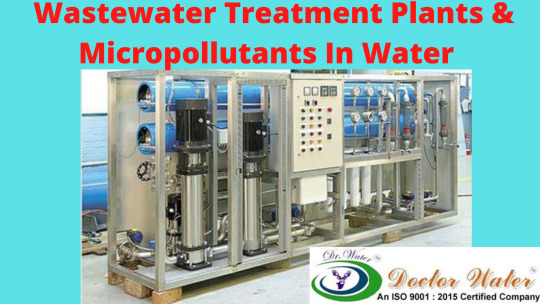
Removal Of Micropollutants In Aquatic Environment By Wastewater Treatment Plants in the last two decades, we have witnessed a huge rise in micropollutants in the aquatic environment. These pollutants are present in the water bodies as individual compounds or in complex mixtures and trigger various ecological effects. There is no specific source of micropollutants because they can originate from different diffusing sources through various flow paths. The best way to treat the water and avoid the negative ecological effects of micropollutants is through wastewater treatment.
Wastewater treatment is the most significant aspect of industry operations, especially to protect against potential ecological damages. Sewage treatment plants or wastewater plants can be an unswerving water source for many purposes. A better wastewater treatment plant can reuse the water to the maximum for sustainability and environmental protection.
Removal of Micropollutants in Conventional Waste Water Treatment.
The water plants have a common set of objectives whether it is a short-term mobile wastewater treatment plant or long-term.
The first objective is to improve the hygienic environment of the receiving waters by creating a barrier for fecal bacteria and other pathogens.
The second objective is to improve the quality of receiving water by eliminating organic compounds by reducing oxygen depletion.
To eliminate nitrogen and phosphorous content in the water, which are primarily responsible for eutrophication.
Prevention of Waterborne Pollution
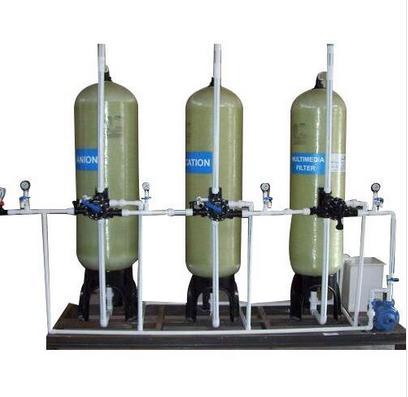
Wastewater treatment systems are specifically engineered to prevent waterborne pollution. In this process clarification is the primary stage in the treatment process. It eliminates the suspended particles through gravity settling. The clarification process also cleans the floating scum on the water surface.
Another important thing is to remove the heavy metals in wastewater through different processes such as electrodialysis, chemical oxidation, ion exchange, ultrafiltration, reverse osmosis, and adsorption. Adsorption generates a minimum volume of sludge, more efficient and cost-effective.
Protects Public Health and Safety
Conventional wastewater treatment eliminates lots of heavy metals and contaminants in general. Nevertheless, it can’t remove the salt concentration, so dust suppression in advanced treatment is required.
Improves Efficiency
Wastewater treatment plants improve the efficiency of the industrial production process. Liquid-solid separation technology eliminates all types of particles. It also removes garbage and inorganic particles from rainwater runoff and wastewater. This separation technology creates an efficient production capability, and at the same time highly cost-effective.
Conclusion
Wastewater treatment is highly beneficial to treat micropollutants from water. It also helps remove inorganic particles from the water and increases the efficiency of the manufacturing unit. Doctor water solutions provide a high-rate biological treatment process. Dr water plant utilizes different modules to manage wastewater flow and achieve treatment standards such as mechanical screening, biological treatment, clarifiers, buffering and flow equalization, and others.
#sewage treatment#best sewage treatment plant#water treatment plant#water treatment#reverse osmosis#sewage treatment plant#packaged drinking water
5 notes
·
View notes
Text
https://justpaste.it/stp-plant-1
#sewage treatment plant#wastewater treatment plant#sewage treatment#domestic sewage treatment plant#sewage treatment plant in delhi#sewage treatment plant manufacturer#water treatment plant manufacturers#sewage treatment plant suppliers#water treatment plant suppliers#stp plant manufacturer#water treatment plant in delhi#wastewater treatment plant manufacturers#stp plant supplier#wastewater treatment plant delhi#wastewater treatment plant suppliers#wastewater treatment companies in delhi ncr#stp ro plant#stp plant#sewage treatment plant near me#small sewage treatment plant#sewage treatment systems#wastewater treatment system#sewage water treatment#home sewage treatment plant#package treatment plant#wastewater treatment companies#sewage plant
0 notes
Text
#sewage treatment plant#wastewater treatment plant#sewage treatment#domestic sewage treatment plant#sewage treatment plant in delhi#sewage treatment plant manufacturer#water treatment plant manufacturers#sewage treatment plant suppliers#water treatment plant suppliers#stp plant manufacturer#water treatment plant in delhi#wastewater treatment plant manufacturers#stp plant supplier#wastewater treatment plant delhi#wastewater treatment plant suppliers#wastewater treatment companies in delhi ncr#stp ro plant#stp plant#sewage treatment plant near me#small sewage treatment plant#sewage treatment systems#wastewater treatment system#sewage water treatment#home sewage treatment plant#package treatment plant#wastewater treatment companies#sewage plant
0 notes
Text
Deeply cultivate filter presses to seize new needs
The industry hzfilter is engaged in is simply "solid-liquid separation". Sewage treatment, chemical industry, minerals, sand and gravel, new energy battery recycling, etc. At first, we didn’t have high requirements for environmental protection and just used ordinary belt filters. It was simple and extensive, and then slowly transitioned to a chamber filter press, and then gradually to a more refined membrane filter press. . Maybe the industry space is not very big, but the competition pattern is relatively good, one of the best in the industry, and the demand boom and performance growth rate are also good in all aspects.
The main best-selling product is the diaphragm filter press, which is mainly composed of a frame, filter plate, filter paper, motor, and some elastic materials. 80% of the cost comes from the frame made of steel and the filter plate made of polypropylene. Therefore, it will be affected by fluctuations in raw material prices to a certain extent.
The sewage passes through the filter chamber and is then pressurized to 4-10Mpa to form a filter cake with less water content. The filtered water is separated, and finally the filter cake is crushed again. Secondary pressure filtration can be operated by automatically cleaning the filter cloth.
Among them, the filter plate can generally be used for 3 years, while the filter cloth wrapped on the filter plate generally needs to be replaced every 3-6 months and is a consumable.
The filtration effect is directly related to the hole shape and density of the filter cloth when weaving it, as well as the quality of the polypropylene used in the filter plate.
Its core technology is also mainly focused on the weaving of filter cloth and the ability of the filter plate to withstand pressure. In addition, it is the level of automation of the entire machine.
hzfilter is very professional in this area, and its self-sufficiency rate in all parts and components is very high. From the introduction of advanced German production lines for filter cloth weaving to the injection molding production of polypropylene filter plates, we basically master the core links ourselves. Of course, there are also downstream manufacturers that do this business alone. After all, filter cloth is a consumable material and the business model is relatively good. This expansion of vertical integration is not only conducive to the future sustainability of performance, but can also reduce the cost of existing products and improve the level of customization.
The characteristics of the filter press as a whole, the product complexity and the individual needs of the upstream require customized production. Production is determined by order and signed one by one. Moreover, the production cycle is relatively long, which also results in a relatively high proportion of inventory in the financial report. (Finished products account for about 10-15% of the total inventory) Precisely because of the high complexity and customization characteristics, the ability to design, produce and customize is very high. In order to adapt to a variety of industries and achieve filtration effects in different industries, it is necessary to master the production of components in each link to achieve upstream requirements.
This is also the reason why hzfilter can quickly capture the surge in demand in the sand and gravel and new energy industries. At least have enough rapid supply capabilities. At the same time, the viscosity of the product has been greatly improved, and it is necessary to have the ability to provide guidance, training, maintenance and other services to downstream customers. The price and cost of raw materials mainly depend on the proportion of different types of polypropylene materials. A higher proportion of crushed materials will result in lower costs, but the quality of the filter plates produced will be lower. Not very good. If you add some T1001J models, the performance will be greatly improved. The cost of steel mainly depends on the price fluctuation of medium plates. If some special stainless steel is used, the cost will increase.
Of course, upstream basically delivers goods on delivery. Except for elastic materials, which are cash on delivery, other items must be paid first. For downstream needs, the company will first design a plan based on the requirements, then trial-produce parts, and then purchase based on production. Of course, downstream companies generally need to issue a performance bond first, and the company will generally receive an amount equivalent to the cost price. Therefore, from the perspective of financial reports, receivables are basically greater than payables. Of course, its operating cash flow is basically the same as net profit, which is pretty good.
Therefore, hzfilter’s competitive advantages and structure are very good, although there is still room. However, at this stage, both expected returns and price protection are lacking. You can always pay attention. Most of the time, you still have to buy cheaply, especially for companies that are growing in stages. Once a higher premium is given, it is easy to cause substantial losses. Thank you for your consultation!
0 notes
Text
Delhi faces significant challenges related to water pollution, stemming from industrial effluents, agricultural
runoff, and untreated sewage discharge. Netsol Water has been at the forefront of addressing these challenges
by implementing advanced water treatment technologies and sewage treatment plants across the city.
#sewage#sewage treatment plant manufacturer#sewage Treatment#Sewage Treatment Plant#Delhi#delhincr#water#netsolwater#sewage pump#RoWater
0 notes
Text
Community Health Starts Here: The Importance of Efficient Sewage Treatment Systems
Efficient sewage treatment systems play a pivotal role in safeguarding public health, protecting the environment, and promoting community well-being. By effectively treating wastewater and removing harmful contaminants, sewage treatment facilities ensure clean water sources, prevent the spread of waterborne diseases, and support healthy communities. In this discourse, we delve into the importance of efficient sewage treatment systems as critical infrastructure for community health and environmental sustainability.

Ensuring Clean Water Sources:
Efficient sewage treatment systems are essential for maintaining clean water sources, such as rivers, lakes, and groundwater. By removing pollutants, pathogens, and contaminants from wastewater before discharge, sewage treatment facilities prevent waterborne diseases, contamination of drinking water sources, and adverse impacts on aquatic ecosystems. Clean water sources are vital for public health, recreation, agriculture, and industrial activities, underscoring the importance of effective sewage treatment in preserving water quality and availability.
Preventing Waterborne Diseases:
Inadequate sewage treatment poses significant risks to public health, as untreated or poorly treated wastewater can contain harmful pathogens and microbial contaminants. Waterborne diseases, such as cholera, typhoid fever, and gastroenteritis, can spread rapidly through contaminated water sources, leading to outbreaks and public health emergencies. Efficient sewage treatment systems remove pathogens and microbial contaminants from wastewater, reducing the risk of waterborne diseases and protecting community health.
Mitigating Environmental Pollution:
Untreated or inadequately treated sewage can pollute the environment, degrade ecosystems, and harm wildlife habitats. Nutrient pollution, caused by excessive nitrogen and phosphorus levels in wastewater, can lead to eutrophication, algal blooms, and oxygen depletion in water bodies, resulting in ecological imbalances and habitat degradation. Efficient sewage treatment systems remove nutrients, organic matter, and pollutants from wastewater, mitigating environmental pollution and protecting natural ecosystems for future generations.
Supporting Sustainable Development:
Efficient sewage treatment is essential for supporting sustainable development goals, including access to clean water and sanitation, environmental protection, and public health promotion. By investing in modern sewage treatment infrastructure, communities can improve sanitation conditions, reduce waterborne diseases, and enhance quality of life for residents. Sustainable sewage treatment practices, such as resource recovery, water reuse, and energy generation, promote circular economy principles, minimize waste generation, and create opportunities for economic development and environmental stewardship.
Conclusion:
Community health starts with efficient sewage treatment systems that protect water quality, prevent waterborne diseases, and promote environmental sustainability. By investing in modern sewage treatment infrastructure, communities can safeguard public health, preserve natural ecosystems, and support sustainable development goals. Efficient sewage treatment is not just a necessity but a cornerstone of community well-being, environmental protection, and social progress. Through collaboration, innovation, and commitment to public health and environmental stewardship, we can build resilient communities with access to safe and sustainable sanitation services for generations to come.
0 notes
Text
Waste to Worth: Navigating the Process of Effective Sewage Treatment
In the constant quest for sustainable and responsible waste management, the treatment of sewage emerges as a critical component in transforming waste into a valuable resource. This journey from waste to worth involves intricate processes and technologies designed to purify wastewater and protect the environment. In this exploration, we navigate the complex but essential realm of effective sewage treatment, unraveling the steps that turn waste into a resource of considerable worth.

Understanding the Imperative of Sewage Treatment
Sewage, a byproduct of human activities and industrial processes, contains a myriad of contaminants that, if left untreated, pose significant environmental and public health risks. Effective sewage treatment is not just a regulatory requirement but a fundamental commitment to safeguarding ecosystems, water resources, and human well-being.
The Journey through Treatment Plants:
1. Collection and Conveyance:
The first step in the sewage treatment process involves the collection and conveyance of wastewater from residential, commercial, and industrial sources to treatment plants. This intricate network of pipes ensures the efficient transport of sewage to centralized facilities.
2. Screening and Primary Treatment:
Upon arrival at the treatment plant, the sewage undergoes screening to remove large debris and objects. The primary treatment phase follows, where gravitational forces facilitate the separation of solids and liquids. This process significantly reduces the organic load in the wastewater.
3. Biological Treatment (Secondary Treatment):
The heart of effective sewage treatment lies in biological processes. In the secondary treatment phase, microorganisms, such as bacteria and activated sludge, break down organic pollutants in the wastewater. This biological treatment transforms dissolved and suspended organic matter into more stable forms, reducing the overall pollutant load.
4. Clarification and Filtration:
After biological treatment, the wastewater undergoes clarification to separate remaining solids from the treated water. Filtration processes, such as sand or membrane filtration, further polish the water, ensuring the removal of any remaining impurities.
5. Disinfection:
Disinfection is a crucial step to eliminate harmful pathogens and bacteria in the treated wastewater. Common disinfection methods include chlorination, ultraviolet (UV) irradiation, and ozonation. This step ensures that the discharged water meets stringent health and safety standards.
6. Effluent Disposal or Reuse:
The final product of sewage treatment, known as effluent, can be safely discharged into receiving water bodies or, in some cases, reused for non-potable purposes such as irrigation. Effluent disposal methods are carefully chosen to minimize environmental impact and adhere to regulatory guidelines.
7. Solids Management:
Solids separated during the treatment process undergo further treatment to produce biosolids. These biosolids, when treated and processed, can be used as a nutrient-rich soil conditioner, closing the loop on sustainable waste management.
Challenges and Innovations in Sewage Treatment:
- Emerging Contaminants:
Addressing emerging contaminants, such as pharmaceuticals and microplastics, poses a challenge in sewage treatment. Ongoing research and technological innovations are focused on developing efficient methods to remove these substances from wastewater.
- Energy Consumption:
Traditional sewage treatment processes can be energy-intensive. Innovations in energy-efficient technologies and the exploration of renewable energy sources contribute to reducing the carbon footprint of sewage treatment plants.
- Decentralized Treatment:
Decentralized treatment approaches, including on-site treatment systems and green infrastructure, are gaining attention for their potential to enhance efficiency and resilience in sewage treatment.
The Worth in Wastewater:
The worth derived from sewage treatment extends beyond environmental protection. Treated wastewater, when safely returned to the environment or reused, conserves freshwater resources. The nutrient-rich biosolids produced can be harnessed to improve soil fertility, supporting sustainable agriculture. In essence, the worth lies not only in safeguarding ecosystems but also in reclaiming valuable resources embedded in wastewater.
Conclusion: From Obligation to Opportunity
"Waste to Worth: Navigating the Process of Effective Sewage Treatment" underscores the transformative journey sewage undergoes to become a valuable resource. Effective sewage treatment is not just a regulatory obligation but an opportunity to reclaim, reuse, and protect. As we navigate the intricacies of sewage treatment, we unveil the worth embedded in wastewater—worth that extends far beyond its initial status as waste, contributing to a more sustainable and resource-efficient future.
0 notes
Text
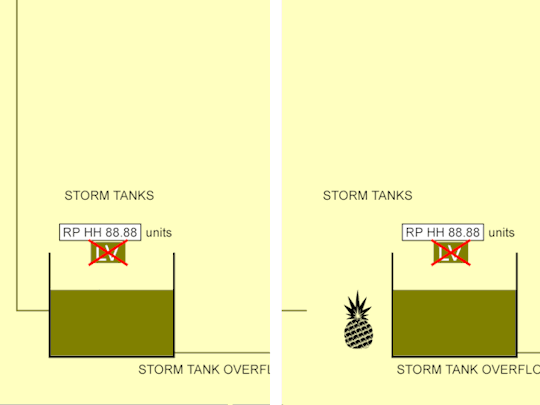
My first ever contract was working on a big project for a water company. My job was to draw 'mimic files' (pseudo schematic digrams) of Sewage Treatment works.
Because I hate pineapples, I decided to hide one as an easter egg inside a storm tank on one of the site drawings.
I got ratted out by a humourless, lacklustre colleague.
However when the files are instantiated and waiting for polling to come back from the outstation all the instruments, levels and readings are set to zero. So I would have very soon been uncovered.
I did end up learning lots of very interesting stories and anecdotes about sewage.
#sewage#sewage treatment#sewerage#sewage treatment works#pinepple#pineapples#fruit#food#drawings#diagrams#diagrammes
1 note
·
View note
Text
Transforming Sewage Treatment in India: Advance Equipment & Projects Pvt Ltd Leads with Innovation
In a rapidly evolving landscape of environmental concerns and wastewater management needs, Advance Equipment & Projects Pvt Ltd emerges as a pioneering force in sewage treatment solutions in India. As a distinguished manufacturer and supplier of sewage treatment plants, we offer a diverse array of advanced systems tailored to the specific demands of our clients.
Our range of expertise encompasses various sewage treatment methodologies, including activated sludge systems, extended aeration systems, membrane bioreactors, and sequencing batch reactors. At Advance Equipment & Projects Pvt Ltd, we prioritize innovation, ensuring that each solution we deliver is equipped with the latest technological advancements for optimal performance and sustainability.
With a relentless commitment to quality and reliability, we aim to revolutionize sewage treatment practices across India. Our team of experienced engineers and technicians works tirelessly to develop solutions that not only meet but exceed industry standards. From residential complexes to industrial facilities, our sewage treatment plants are designed to deliver exceptional results in diverse settings.
At Advance Equipment & Projects Pvt Ltd, customer satisfaction is paramount. We understand the unique challenges faced by each client, and we tailor our solutions accordingly. From initial consultation to installation and ongoing support, our dedicated team is committed to providing comprehensive assistance every step of the way.
In addition to our focus on quality and customer service, Advance Equipment & Projects Pvt Ltd remains committed to affordability. We believe that access to sustainable sewage treatment solutions should not be cost-prohibitive. Therefore, we strive to offer cost-effective options without compromising on the quality or performance of our products.
In conclusion, Advance Equipment & Projects Pvt Ltd stands as a trusted partner for sewage treatment solutions in India. With our innovative approach, commitment to excellence, and dedication to customer satisfaction, we are reshaping the landscape of wastewater management, one project at a time. Contact us today to learn more about how we can address your sewage treatment needs effectively and efficiently.
Read More
#sewage_treatment_plant_manufacturer_supplier_in_noida#sewage_treatment_plant_manufacturer_supplier_in_ncr#sewage_treatment_plant_manufacturer_supplier_in_gurgaon#water_treatment_plant_manufacture_supplier_in_india#sewage_treatment_plant_manufacturer_supplier_in_rajasthan#effluent_treatment_plant_manufacturer_supplier_in_punjab#MBBR_sewage_treatment_plant_manufacturer_supplier_in_india#MBR_sewage_treatment_plant_manufacturer_supplier_in_india#Sewage_treatment_services_in_sector_8_noida#demineralisation_plant_services_provider_in_noida#water treatment#sewage treatment plant animation#sewage treatment#water treatment plant#effluent treatment plant
0 notes
Text
Dive into how sewage treatment plants revolutionize industries, fostering eco-friendly practices and supporting sustainable growth. Explore the profound impact of these plants on environmental stewardship and industrial efficiency.
#Sewage Treatment#Industrial Sustainability#EcoFriendly Practices#Environmental Stewardship#Industrial Efficiency#Sustainable Growth
0 notes
Text
Water management and wastewater disposal are essential aspects of modern infrastructure. Ensuring the right pump is in place can make all the difference. Among the variety of pumps available, the sewage pump and submersible pump often lead to confusion. Both serve different purposes, but how exactly do they differ? Read the article to know the differences between a sewage pump and a submersible pump.
#Sewage Pump#Submersible Pump#Key Differences#Water Management#Wastewater Disposal#Pump Types#Pump Functionality#Infrastructure#Pump Selection#Pump Comparison#Sewage Treatment#Underwater Pumps#Drainage Solutions#Pump Efficiency#Pump Design#Durability#Pump Maintenance#PPS
0 notes
Text
BLIIoT Distributed Ethernet IO Module applied to Sewage Treatment Plants
Foreword
Sewage treatment, as a key link in maintaining environmental health and sustainable development, is receiving increasing attention from governments and societies around the world. With the continuous advancement of science and technology, the application of distributed IO modules in the field of sewage treatment has gradually shown great potential, bringing new possibilities for the operation, monitoring and optimization of sewage treatment plants.
What is BLIIoT Distributed Ethernet IO Module?
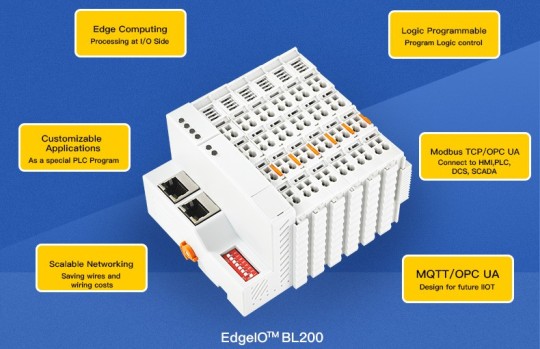
Sewage treatment is mainly logic control. BLIIoT Distributed Ethernet IO Module is a system that supports Ethernet communication and realizes communication and control through network connection. Support free addition of IO modules, up to 32 IO modules, these modules can include various sensors, actuators and control devices, and transmit data to the central control system through the network, thereby realizing remote monitoring and control. It also supports edge computing functions and logic control functions. This architecture makes the sewage treatment process more intelligent and automated, and also provides more support for data-driven decision-making.
Application of BLIIoT Distributed Ethernet IO Module in Sewage Treatment

Real-time monitoring and Data Collection
BLIIoT Distributed Ethernet IO Module can be integrated with various sensors, such as flow sensors, turbidity sensors, pH sensors, etc., to monitor various parameters of sewage in real time. These modules transmit the collected data to a central control system or data center, allowing operators to keep abreast of the status of the processing process.
Remote Control and Adjustment
BLIIoT Distributed Ethernet IO Module enable operators to remotely control wastewater treatment equipment such as pumping stations, valves and agitators. With real-time data, operators can make adjustments based on the actual conditions of the treatment process, thereby optimizing the treatment effect.
Alarm and Notification System
BLIIoT Distributed Ethernet IO Module is integrated with the alarm system, which can automatically detect abnormal conditions in the processing process and send alarm notifications to the operator in time. This facilitates quick response to problems and reduces the potential risk of accidents.
Troubleshooting and Maintenance
BLIIoT Distributed Ethernet IO Module monitors the status and performance of the equipment, can diagnose possible faults in advance, and provide maintenance personnel with suggestions for repair and maintenance, thereby reducing the risk of equipment damage and downtime.
Data Recording and Analysis
The distributed IO module records historical data to provide support for subsequent data analysis. Through the analysis of historical data, operators can discover potential trends and problems, and make corresponding adjustments and improvements.
Energy Management
BLIIoT Distributed Ethernet IO Module monitors the energy consumption of each device to help managers find the links with high energy consumption. By optimizing energy use, wastewater treatment plants can achieve energy-saving and emission-reduction goals.
Scalability and Flexibility
BLIIoT Distributed Ethernet IO Module make the system more scalable and flexible. New devices and sensors can be added to the existing network architecture relatively easily, enabling continuous development and upgrade of the system.
Advantages of distributed IO modules

BLIIoT Distributed Ethernet IO Module bring many advantages in the field of sewage treatment. First, it increases the intelligence and automation of the processing process, reducing the possibility of human error. Second, real-time data monitoring and remote control make the process more precise and efficient. In addition, functions such as fault diagnosis, energy consumption management, and data analysis help to optimize the overall operating efficiency of the sewage treatment plant, while also contributing to environmental protection and resource management.
In conclusion
The application of BLIIoT Distributed Ethernet IO Module in the field of sewage treatment has brought revolutionary changes to the management and operation of sewage treatment plants. It not only improves the efficiency and precision of the processing process, but also contributes to environmental protection and sustainable development. The equipment has the characteristics of simple debugging, convenient operation, safe use, high efficiency, low failure rate, and good sewage treatment effect, which improves labor productivity. However, we also need to fully consider network security and other issues in the application to ensure the stability and reliability of BLIIoT Distributed Ethernet IO Module. With the continuous development of technology, we have reason to believe that BLIIoT Distributed Ethernet IO Module will bring more innovation and progress to the field of sewage treatment in the future.
More information about BLIIoT Distributed Ethernet IO Module: https://www.bliiot.com/distributed-modbus-tcp-io-module-p00345p1.html
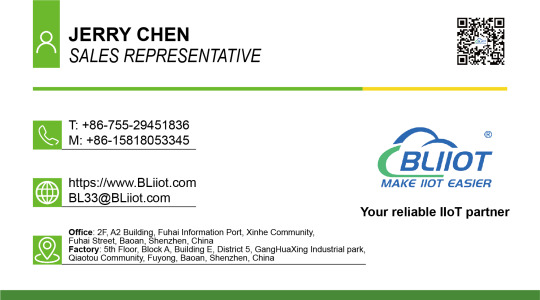
#iot#iot solution#smart water#sewage treatment#remote monitoring#data collection#ethernet io#distributed IO#modbus#MQTT#BLIIoT
0 notes